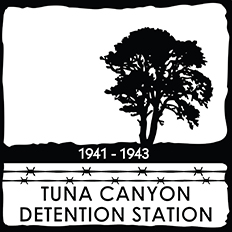Kishiro Hayashi was a 17-year old Japanese national who emigrated to Peru in 1935. On January 7, 1943, Mr. Hayashi was arrested because, as manager of his uncle’s factory and store, his name was on La Lista Negra,” or “The Proclaimed List of Certain Blocked Nationals.” This blacklist of “potentially dangerous enemy aliens” affected businesses and individuals, often with no connection to the Axis powers–like journalists, teachers, business owners, priests, or community leaders of prefecture clubs or cultural organizations. Mr. Hayashi became one of 2264 men, women, and children of Japanese ancestry seized from 13 Latin American countries and interned in the US for the purpose of hostage exchange. Over 80 percent of these hostages, almost 1800 people, were taken from Peru.
Just before 6 am, the doorbell rang. Three detectives escorted Mr. Hayashi to the central police station, which already had nearly 100 Japanese men incarcerated in the basement. The next evening, they were put on more than ten trucks and driven out of Lima. After two days of travelling without knowing their destination, they were led onto a ship by US soldiers with bayonets. The ship held about 168 people (many of whom were from his city and customers of his store). Mr. Hayashi felt like they were being treated like animals. He recalled this forcible separation from his family, including his pregnant wife,
“I have no word to describe this utterly cruel treatment.”
After three days of travel, they arrived at a harbor. Mr. Hayashi recalled,
“American soldiers with bayonets urged us to move…to the ship as if we were some animals….[T]he military cargo ship set sail to Panama. Finally, it was clear that we were not going to be sent to the remote area in Peru, but were being sent to [the] US.”
The military cargo ship sailed to Panama. As they were processed, all their money was confiscated. After a week, the prisoners boarded another military cargo ship and sailed to the US. They were told that, since the Atlantic Ocean was too dangerous due to the presence of German submarines, they sailed on the Pacific Ocean. They were fed only twice a day and felt so hungry. They had to work cleaning the deck, painting or helping in the kitchen. They were allowed to go on deck for only a half hour each day.
“I was assigned to clean the deck, but sometimes we were mistreated by a mean soldier who [kept] yelling at us, “Hurry up! Hurry up! and continuously poured hot water from behind us. It was a mean treatment.”
The voyage took about three weeks. On February 6, 1943, the prisoners reached San Pedro Harbor in California and went through inspection at the Customs Office. They were then processed into Tuna Canyon Detention Station. After about a week, they were put on a train headed for Kenedy Internment Camp in Texas.
Later in July 1943, Mr. Hayashi was reunited with his wife and infant son Tomas, when they arrived at Crystal City Internment Camp in Texas. After the war, the Hayashi family was paroled out of camp to work at Seabrook Farms in New Jersey. It took 5 years before they could return to Peru and rebuild their lives.
Kishiro Hayashi, who passed away in 1999, was a well-respected leader of the Japanese Peruvian community in Peru. He is also remembered for his support of educational efforts to document and preserve the wartime experiences of the Japanese Peruvians and of the redress struggle to hold the US government accountable for human rights violations.

